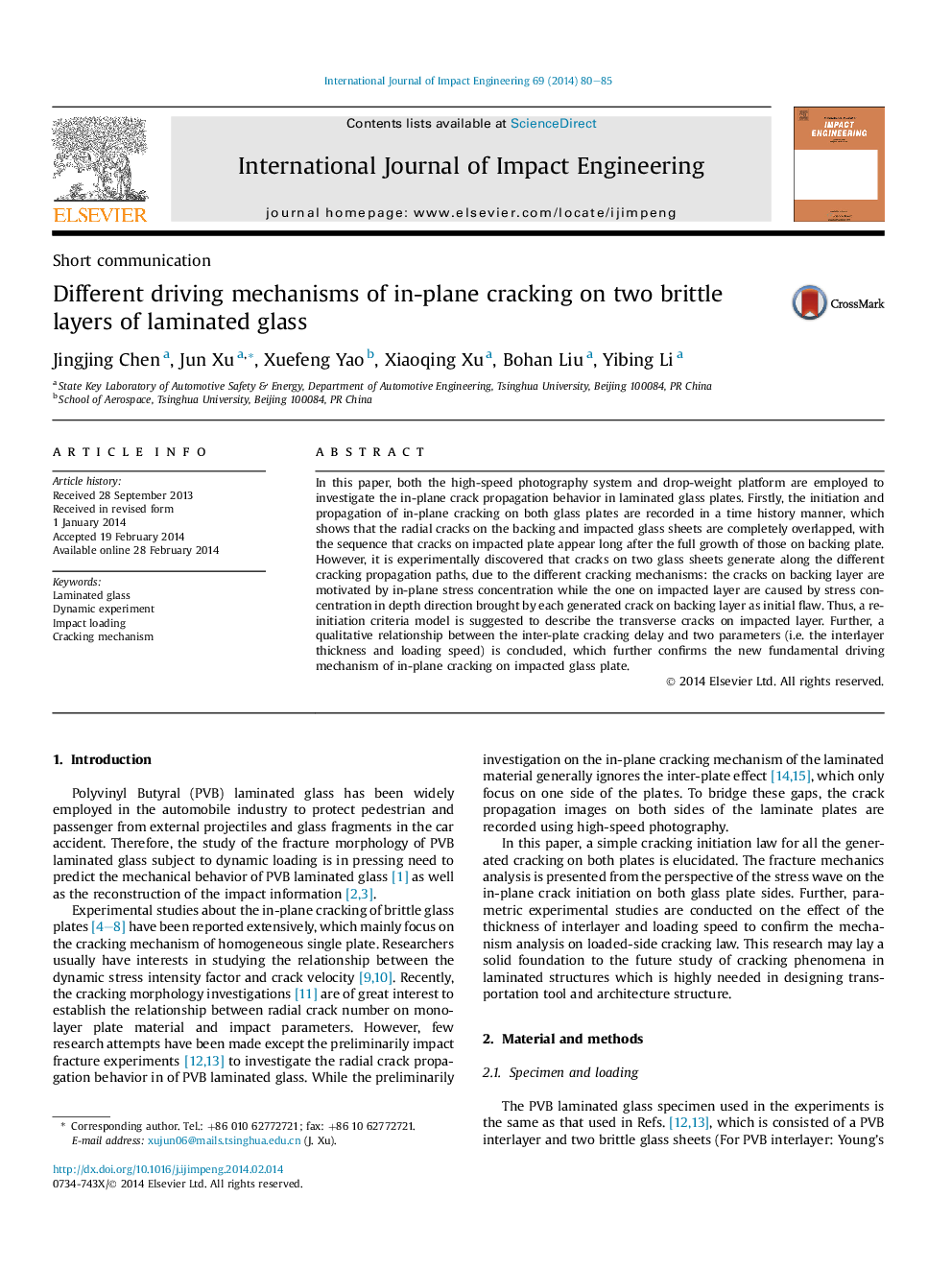| Article ID | Journal | Published Year | Pages | File Type |
|---|---|---|---|---|
| 776493 | International Journal of Impact Engineering | 2014 | 6 Pages |
In this paper, both the high-speed photography system and drop-weight platform are employed to investigate the in-plane crack propagation behavior in laminated glass plates. Firstly, the initiation and propagation of in-plane cracking on both glass plates are recorded in a time history manner, which shows that the radial cracks on the backing and impacted glass sheets are completely overlapped, with the sequence that cracks on impacted plate appear long after the full growth of those on backing plate. However, it is experimentally discovered that cracks on two glass sheets generate along the different cracking propagation paths, due to the different cracking mechanisms: the cracks on backing layer are motivated by in-plane stress concentration while the one on impacted layer are caused by stress concentration in depth direction brought by each generated crack on backing layer as initial flaw. Thus, a re-initiation criteria model is suggested to describe the transverse cracks on impacted layer. Further, a qualitative relationship between the inter-plate cracking delay and two parameters (i.e. the interlayer thickness and loading speed) is concluded, which further confirms the new fundamental driving mechanism of in-plane cracking on impacted glass plate.
